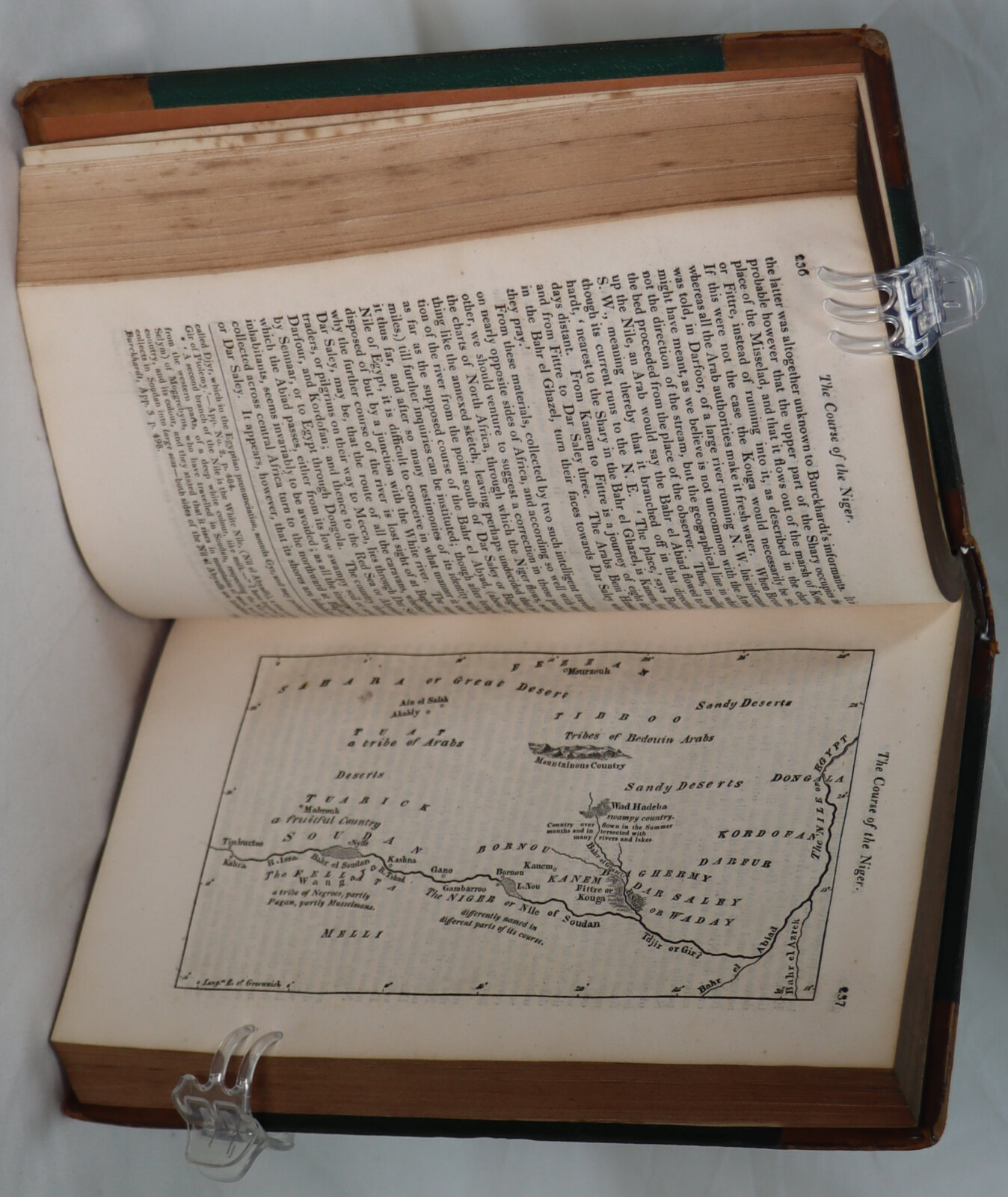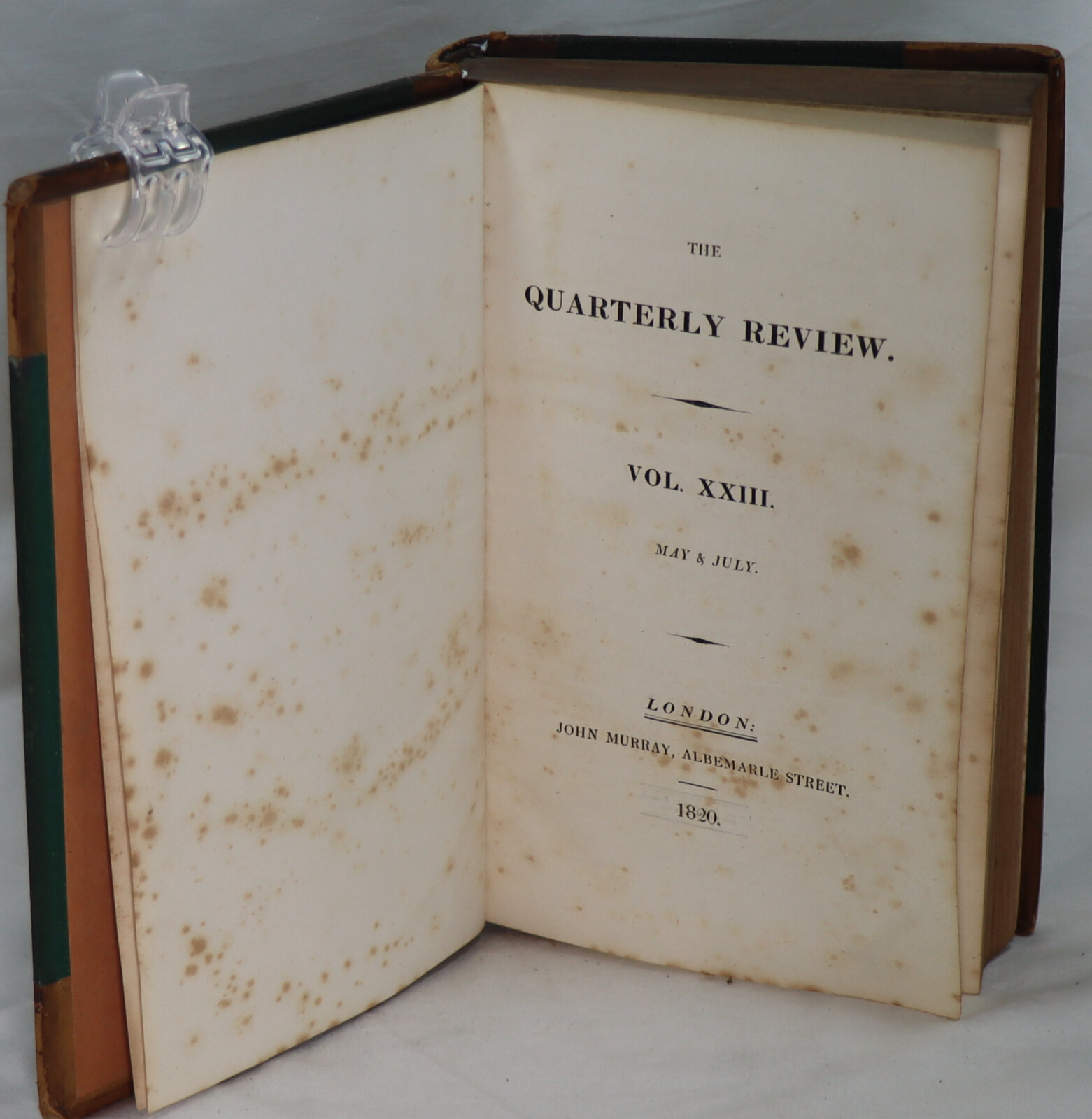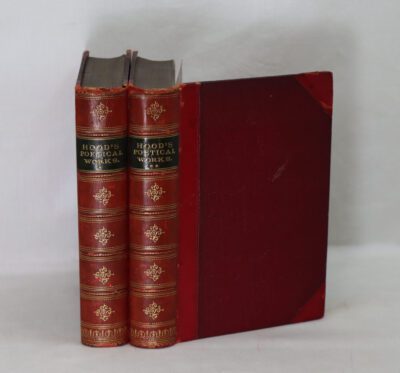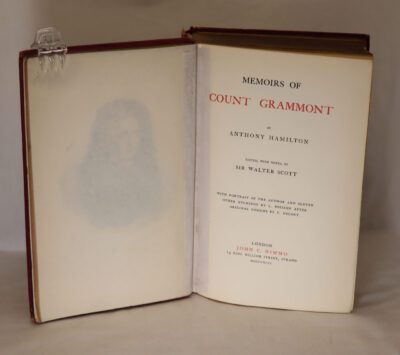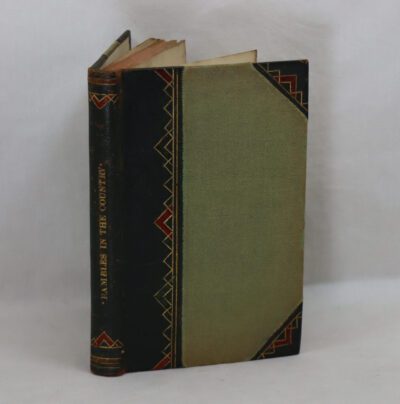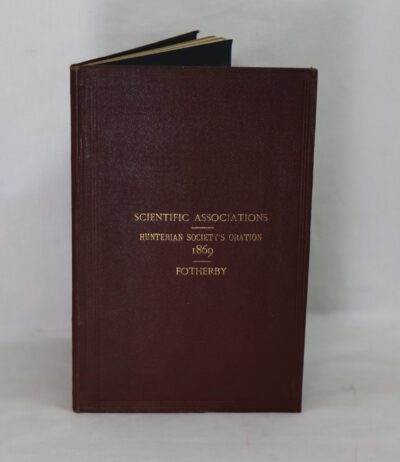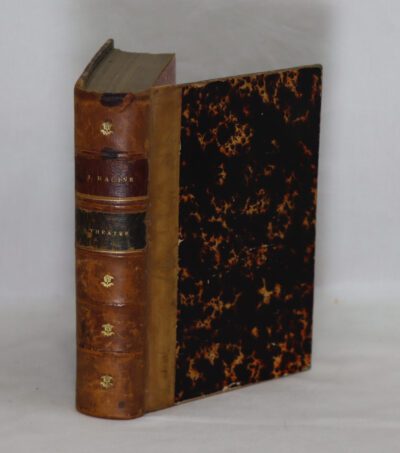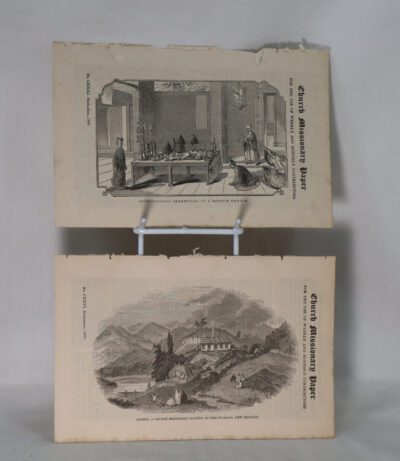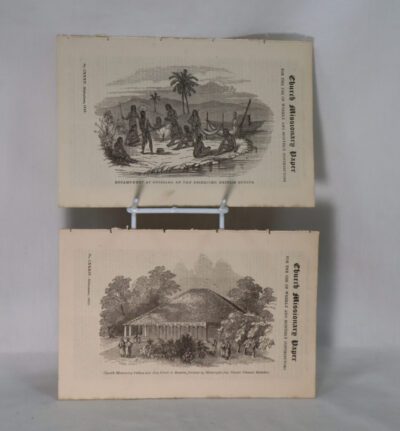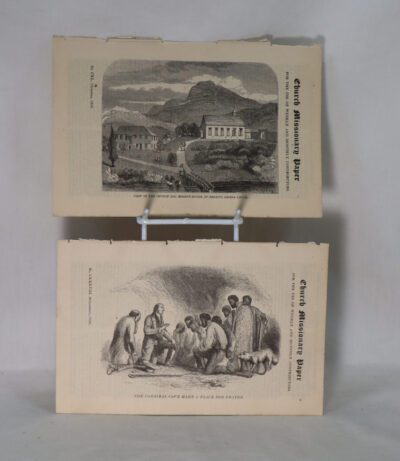The Quarterly Review. Vol. 23.
Printed: 1820
Publisher: John Murray. London
| Dimensions | 15 × 22 × 3 cm |
|---|---|
| Language |
Language: English
Size (cminches): 15 x 22 x 3
Condition: Fine (See explanation of ratings)
Item information
Description
Tan calf spine with raised banding, red title plate and gilt title. Green leatherette boards.
-
F.B.A. provides an in-depth photographic presentation of this item to stimulate your feeling and touch. More traditional book descriptions are immediately available.
A rare and well bound edition stacked full of historic interest of this famous political and literary periodical.
The Quarterly Review was a literary and political periodical founded in March 1809 by London publishing house John Murray. It ceased publication in 1967. It was referred to as The London Quarterly Review, as reprinted by Leonard Scott, for an American edition.
Initially, the Quarterly was set up primarily to counter the influence on public opinion of the Edinburgh Review. Its first editor, William Gifford, was appointed by George Canning, at the time Foreign Secretary, later Prime Minister.
Early contributors included Secretaries of the Admiralty John Wilson Croker and Sir John Barrow, Poet Laureate Robert Southey, poet-novelist Sir Walter Scott, Italian exile Ugo Foscolo, Gothic novelist Charles Robert Maturin, and the essayist Charles Lamb.
Under Gifford, the journal took the Canningite liberal-conservative position on matters of domestic and foreign policy, if only inconsistently. It opposed major political reforms, but it supported the gradual abolition of slavery, moderate law reform, humanitarian treatment of criminals and the insane, and the liberalizing of trade. In a series of articles in its pages, Southey advocated a progressive philosophy of social reform. Because two of his key writers, Scott and Southey, were opposed to Catholic emancipation, Gifford did not permit the journal to take a clear position on that issue.
Reflecting divisions in the Conservative party itself, under its third editor, John Gibson Lockhart, the Quarterly became less consistent in its political philosophy. While Croker continued to represent the Canningites and Peelites, the party’s liberal wing, it also found a place for the more extremely conservative views of Lords Eldon and Wellington.
During its early years, reviews of new works were sometimes remarkably long. That of Henry Koster’s Travels in Brazil (1816) ran to forty-three pages.
Typical of early nineteenth-century journals, reviewing in the Quarterly was highly politicized and on occasion excessively dismissive. Writers and publishers known for their Unitarian or radical views were among the early journal’s main targets. Prominent victims of scathing reviews included Irish novelist Lady Morgan (Sydney Owenson), English poet and essayist Walter Savage Landor, as well as English novelist Mary Wollstonecraft Shelley and her husband Percy Bysshe Shelley.
In an 1817 article, John Wilson Croker attacked John Keats in a review of Endymion for his association with Leigh Hunt and the so-called Cockney School of poetry. Shelley blamed Croker’s article for bringing about the death of the seriously ill poet, ‘snuffed out’, in Byron’s ironic phrase, ‘by an article’.
In 1816, Sir Walter Scott reviewed his own, but anonymously published, Tales of My Landlord, partly to deflect suspicion that he was the author; he proved one of the book’s harshest critics. Scott was also the author of a favourable review of Jane Austen’s Emma.
John Murray is a Scottish publisher, known for the authors it has published in its long history including Jane Austen, Sir Arthur Conan Doyle, Lord Byron, Charles Lyell, Johann Wolfgang von Goethe, Herman Melville, Edward Whymper, Thomas Malthus, David Ricardo, and Charles Darwin. Since 2004, it has been owned by conglomerate Lagardère under the Hachette UK brand.
The business was founded in London in 1768 by John Murray (1737–1793), an Edinburgh-born Royal Marines officer, who built up a list of authors including Isaac D’Israeli and published the English Review.
John Murray the elder was one of the founding sponsors of the London evening newspaper The Star in 1788.
John Murray II
He was succeeded by his son John Murray II, who made the publishing house important and influential. He was a friend of many leading writers of the day and launched the Quarterly Review in 1809. He was the publisher of Jane Austen, Sir Walter Scott, Washington Irving, George Crabbe, Mary Somerville and many others. His home and office at 50 Albemarle Street in Mayfair was the centre of a literary circle, fostered by Murray’s tradition of “four o’clock friends”, afternoon tea with his writers.
Murray’s most notable author was Lord Byron, who became a close friend and correspondent of his. Murray published many of his major works, paying him over £20,000 in rights. On 10 March 1812 Murray published Byron’s second book, Childe Harold’s Pilgrimage, which sold out in five days, leading to Byron’s observation “I awoke one morning and found myself famous”.
On 17 May 1824 Murray participated in one of the most notorious acts in the annals of literature. Byron had given him the manuscript of his personal memoirs to publish later on. Together with five of Byron’s friends and executors, he decided to destroy Byron’s manuscripts because he thought the scandalous details would damage Byron’s reputation. With only Thomas Moore objecting, the two volumes of memoirs were dismembered and burnt in the fireplace at Murray’s office. It remains unknown what they contained.
John Murray III
John Murray III (1808–1892) continued the business and published Charles Eastlake’s first English translation of Goethe’s Theory of Colours (1840), David Livingstone’s Missionary Travels (1857), and Charles Darwin’s Origin of Species (1859). Murray III contracted with Herman Melville to publish Melville’s first two books, Typee (1846) and Omoo (1847) in England; both books were presented as nonfiction travel narratives in Murray’s Home and Colonial Library series, alongside such works as the 1845 second edition of Darwin’s Journal of Researches from his travels on HMS Beagle. John Murray III also started the Murray Handbooks in 1836, a series of travel guides from which modern-day guides are directly descended. The rights to these guides were sold around 1900 and subsequently acquired in 1915 by the Blue Guides.
John Murray IV
His successor Sir John Murray IV (1851–1928) was publisher to Queen Victoria. Among other works, he published Murray’s Magazine from 1887 until 1891. From 1904 he published the Wisdom of the East book series. Competitor Smith, Elder & Co. was acquired in 1917.
His son Sir John Murray V (1884–1967), grandson John Murray VI (John Arnaud Robin Grey Murray, known as Jock Murray; 1909–1993) and great-grandson John Murray VII (John Richmond Grey Murray; 1941–) continued the business until it was taken over.
In 2002, John Murray was acquired by Hodder Headline, which was itself acquired in 2004 by the French conglomerate Lagardère Group. Since then, it has been an imprint under Lagardère brand Hachette UK.
In 2015, business publisher Nicholas Brealey became an imprint of John Murray.
Condition notes
Want to know more about this item?
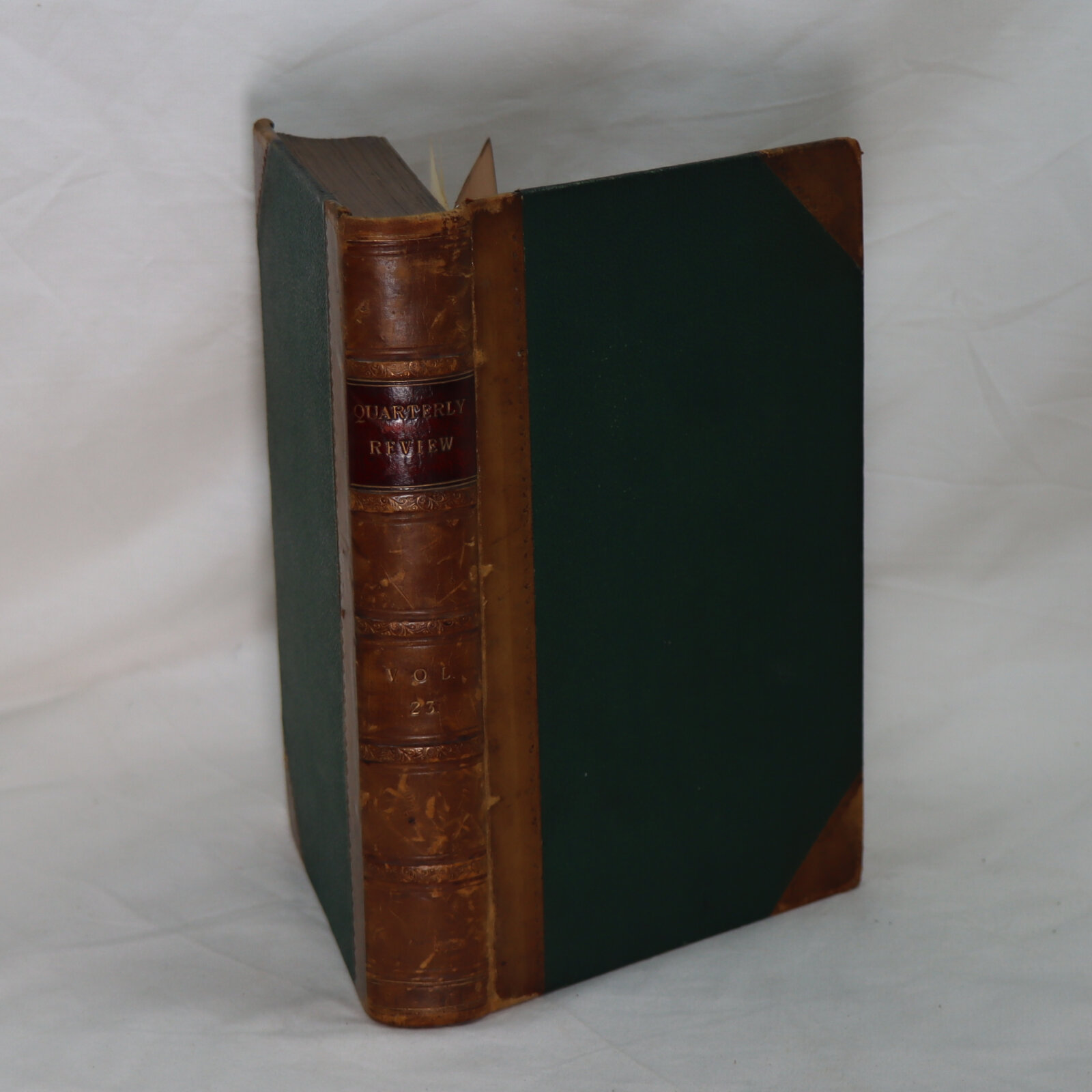
Related products
Share this Page with a friend

